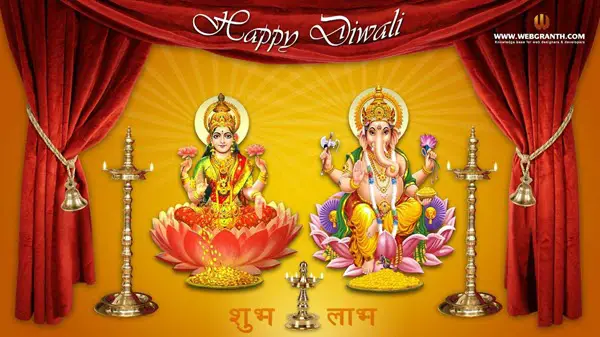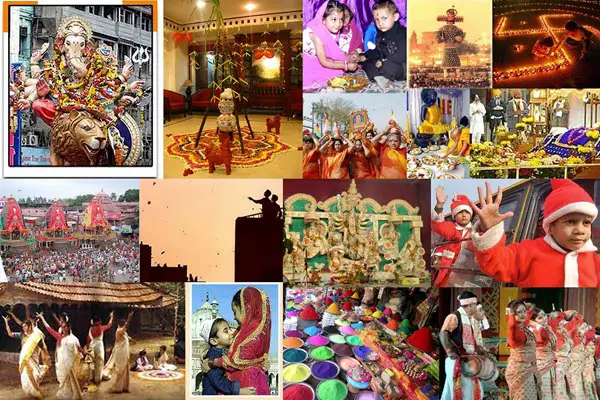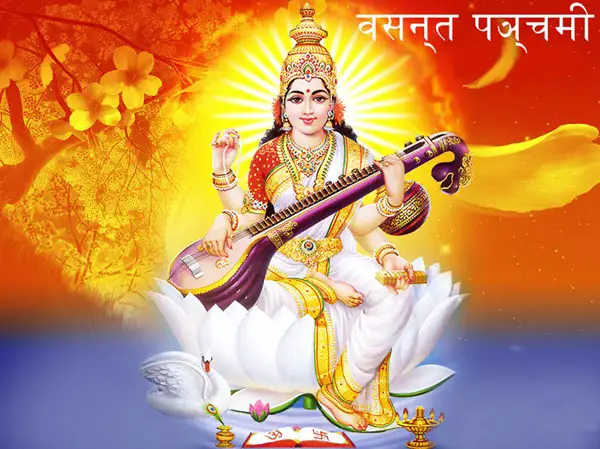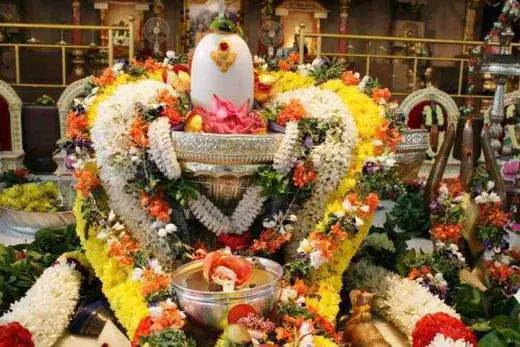Festivity is the center of the Hindu Religion. As a matter of fact, every Hindu Festival involves some other kind of celebration. Holi is one such ancient Hindu Festival, which recognizes that life is made of different colors of love, joy, enjoyment, and festivity. It is a spring festival, also known as the festival of colors. It is celebrated in India and in different parts of the world with equal enthusiasm.
Holi signifies the victory of good over evil and is celebrated on the Full Moon’s day in Phalguna Poornima as per the Hindu calendar. It is typically celebrated in March and sometimes in February. It marks the arrival of spring and the end of winter.
Holi celebrations start with the “Holika” bonfire the night before the main Holi Celebration, where people gather, sing, dance, and party. The next day’s main celebrations start with carnivals of colors where people color each other with dry colored powder and colored water.
Here people celebrate Holi carrying colored water guns and colored water-filled balloons. Everyone participates in this festival of Holi colors: rich or poor, young or old, man or woman, children or elders. Then, there is the height of celebrations with groups carrying drums and musical instruments.
Singing and dancing occur in open streets and parks. People forget enmity and celebrate this festival with full enjoyment. Holi delicacies, food, and drinks are offered to each other. For example, there is a special Holi drink called “Bhaang,” which is traditionally shared. In the evening, people dress up and visit friends and family members.
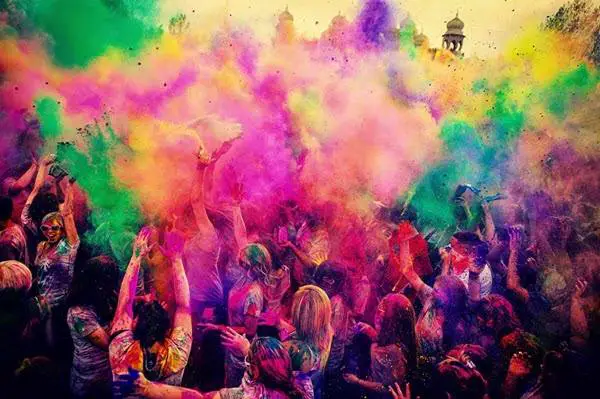
Table of Contents
Why is Holi celebrated?
Almost every Hindu festival has a symbolic legend to explain its history and significance.
The same goes for Holi.
Holi, too, has a symbolic legend to explain its significance.
Actually, the word “Holi” originates from “Holika,” which was the evil sister of the demon king Hiranyakashipu. This demon king had earned a boon that nobody could kill him. This made him arrogant as he believed that he had become immortal as God. Moreover, he demanded worship from every citizen of his kingdom. He thought that he had become equivalent to God, the supreme being, so everyone should only worship him as God.
However, his son Prahlad was a pure and ardent devotee of God. He disagreed with what his father said and remained a devotee of God. He continued to worship Lord Vishnu and always praised Lord Vishnu before his father.
Prahlad’s devotion to God angered his father – the demon king Hiranyakashipu. He did not like this attitude of Prahlad and subjected him to dangerous punishments to kill him.
However, Prahlad’s devotion won each time when his father gave him punishments. He continued to worship Lord Vishnu. This is even more infuriating, Hiranyakashipu. He then decided to use his sister Holika to kill Prahlad. She sat on a pyre with Prahlad. She thought Prahlad would be killed, as she was wearing a cloak that gave her immunity against fire.
However, as the fire roared, the cloak flew from Holika’s neck and encased Prahlad. This protected Prahlad from fire, and Holika got burned. Finally, Lord Vishnu appeared as Narasimha’s avatar and killed Hiranyakashipu.
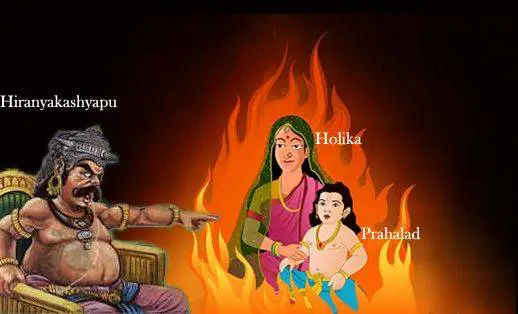
From then onwards, the bonfire became a symbol of victory of good over evil. Prahlad’s devotion to Lord Vishnu teaches us that good is always victorious over evil. People then started the tradition of a bonfire in the form of “Holika Dahan.” Eventually, this tradition became elaborate, and people began to use colored powder to celebrate the victory of good over evil as “Holi.”
Holi also finds a detailed description in Vedas and Puranas, such as Narada Purana and Bhavishya Purana. It also finds a mention in Jaimini Mimansa. So, it comes out as an ancient Hindu Festival. Moreover, a stone inscription found in the province of Vindhya at Ramgarh mentions Holika Utsav on it, which is as old as 300 BC.
Besides these findings, Holi Celebrations have been celebrated since the period of Shri Krishna in the form of divine love between Radha and Lord Krishna. It has taken to a grand celebration in the region of Braj in India, where Holi is celebrated for more than a week. Holi also finds detailed coverage in ancient paintings and murals. For example, the temple at Hampi in Vijaynagar depicts the joyous scenes of Holi.
Holi is a festival that diminishes the boundary between rich and poor. It has crossed boundaries and is now celebrated with equal enthusiasm in foreign countries. People forget the differences between caste, color, race, region, and religion and come out to celebrate this festival of colors – Holi.
Holi Date 2024
Holi Date 2023: 25th March 2024, Monday
Holika Dahan: 24th March 2024, Sunday
Purnima Tithi: 09:54 AM on 24th March 2024
Purnima Tithi Ends: 12:29 PM on 25th March 2024
Wishing all my beloved readers A Very Happy and Colorful Holi!

